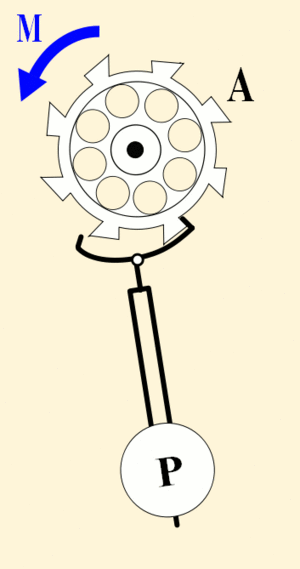Second facts for kids
The second (symbol: s), sometimes shortened to sec., is a basic unit of time. It's one of the seven main units in the International System of Units (SI), which is a worldwide standard for measurements.
Imagine a tiny caesium-133 atom. The second is defined by how long it takes for a specific type of radiation from this atom to complete 9,192,631,770 cycles. This is a super precise way to measure time!

Other units of time, like minutes, hours, and days, are all based on the second.
- There are 60 seconds in one minute.
- There are 3,600 seconds in one hour.
- There are 86,400 seconds in one day.
We often use SI prefixes to talk about parts of a second. For example:
- A millisecond is one thousandth (1/1,000) of a second.
- A nanosecond is one billionth (1/1,000,000,000) of a second.
While you could say "kilosecond" (one thousand seconds), we usually just use minutes, hours, or days instead. These non-SI units increase by multiples of 60 or 24, not by powers of ten like the SI system.
Contents
What is the International Second?
The "international second" is the official, worldwide definition of the second. It's based on the caesium-133 atom.
Specifically, the second is the time it takes for 9,192,631,770 cycles of radiation from a caesium-133 atom. This atom must be perfectly still and at a temperature of 0 K (which is absolute zero, the coldest possible temperature). This makes the measurement incredibly accurate.
The official symbol for a second is s.
How Many Seconds in Other Time Units?
Here's how one international second compares to other units of time:
- It's 1/60 of a minute. (So, 1 minute = 60 seconds).
- It's 1/3,600 of an hour. (So, 1 hour = 3,600 seconds).
- It's 1/86,400 of a day. (So, 1 day = 86,400 seconds).
Did you know?
- A common year has 31,536,000 seconds.
- A leap year has 31,622,400 seconds.
The History of the Second
The idea of dividing time into smaller parts goes way back!
Originally, what we call a "minute" was known as a "prime minute." The "second" was called a "second minute," meaning the second small division of an hour.
The number 60 comes from the ancient Babylonians. They used a counting system based on 60. However, they didn't divide their time units into 60 parts in the same way we do now.
The ancient Egyptians defined an hour as 1/12 of daytime or 1/12 of nighttime. This meant hours changed length with the seasons! Later, Hellenistic astronomers like Ptolemy defined an hour as 1/24 of a "mean solar day" (the average length of a day). When they divided this hour into 60 parts, and then those parts into 60 more, the second became 1/86,400 of a mean solar day.
For a long time, the second was defined by how long it took the Earth to go around the Sun. But scientists realized the Earth's spin wasn't perfectly steady. This meant they needed a more precise way to define the second.
This led to the invention of the atomic clock. These clocks are incredibly accurate because they use the steady vibrations of atoms. In 1967, scientists decided to use the caesium-133 atom to define the second. This new definition was much more stable and precise than relying on the Earth's movement.
In 1997, the definition was made even more precise. It stated that the caesium atom should be at rest and at 0 K. This helps scientists make atomic clocks even more accurate.
The Second in Games
In some role-playing games, a "second" might be used to describe a short period of time, like one turn in a fight. In these games, it doesn't always mean a real-life second. It could be shorter or longer, depending on the game's rules. It's just a way to measure small chunks of game time.
Fun Facts About the Second
- In the past, people divided degrees and hours into "prime minutes," "second minutes," and "third minutes." This is where our modern "minute" and "second" come from. For even smaller divisions, we now use decimal numbers (like 0.1 seconds).
- Some languages still have a word for 1/60 of a second, like "tercja" in Polish or "ثالثة" (thalitha) in Arabic.
Related pages
See also
 In Spanish: Segundo para niños
In Spanish: Segundo para niños


